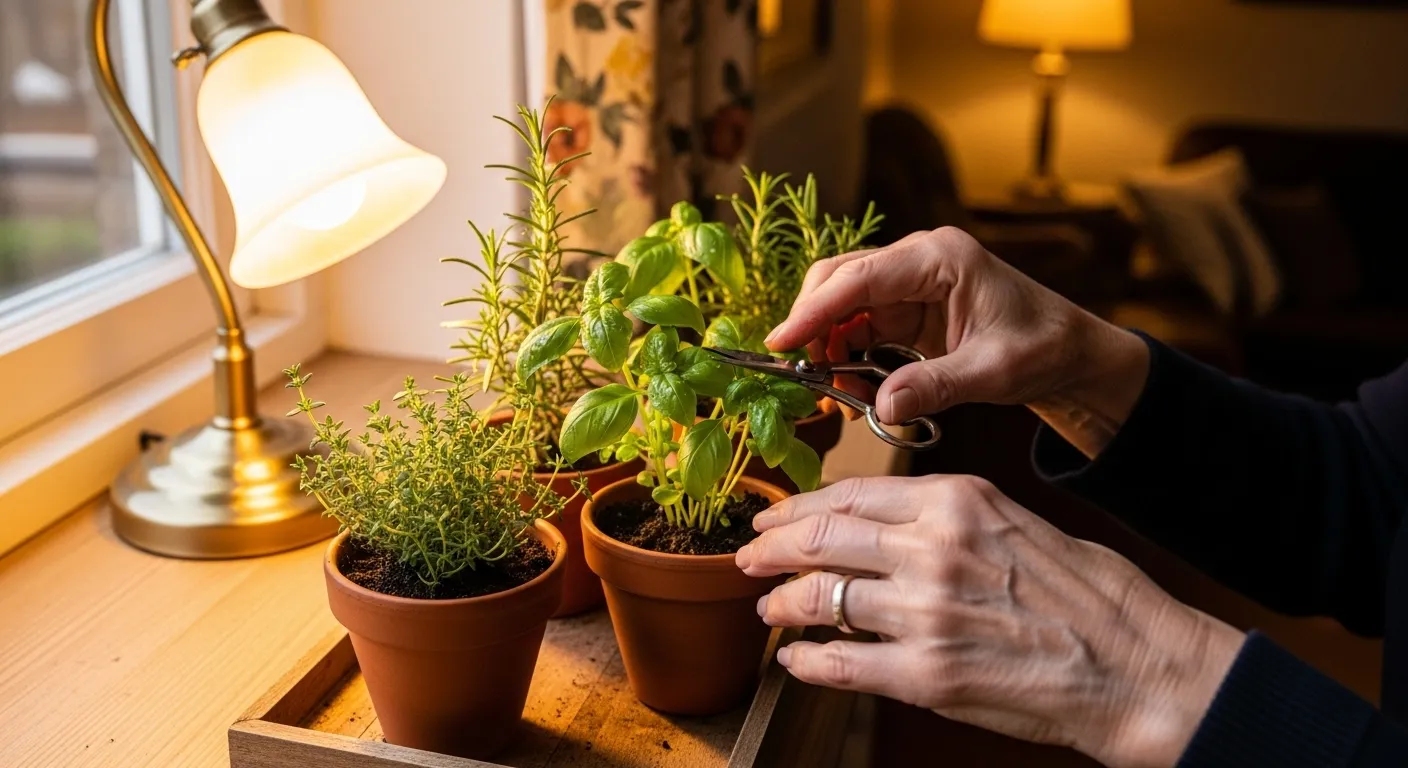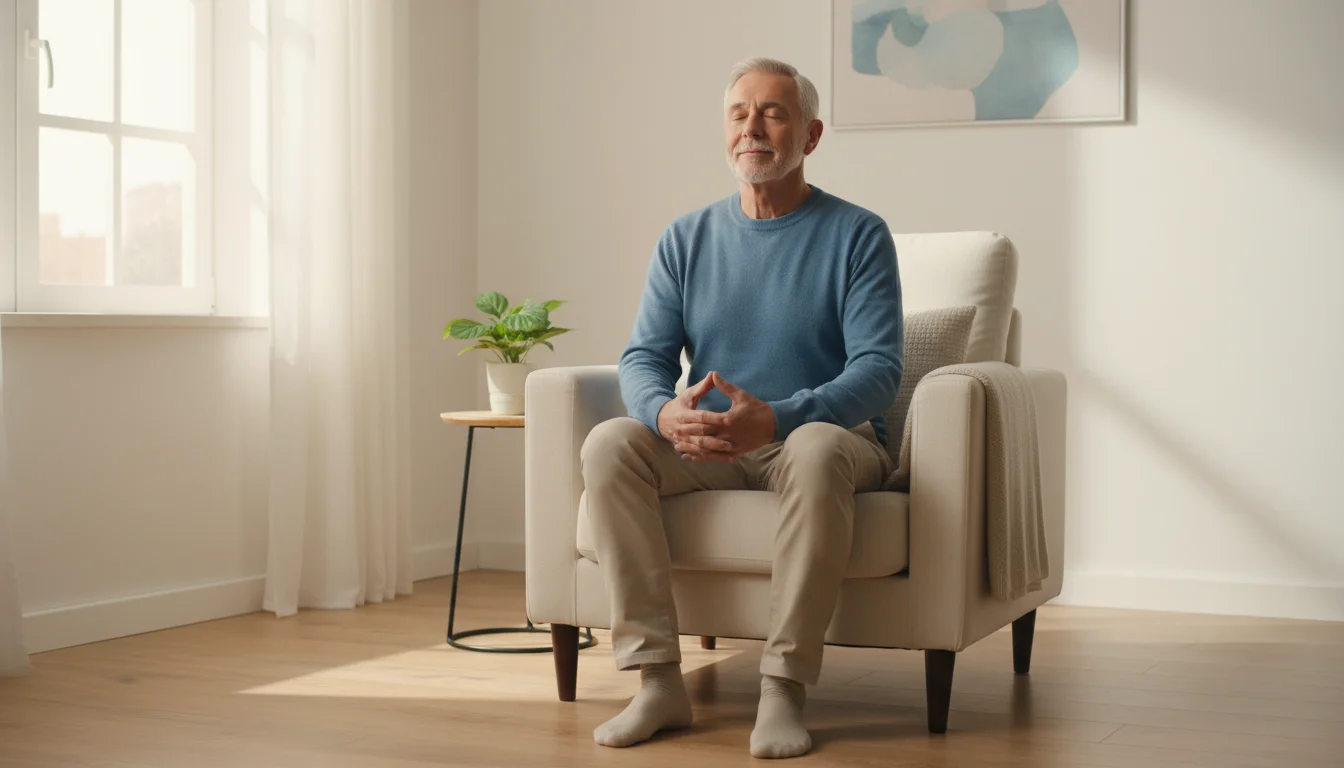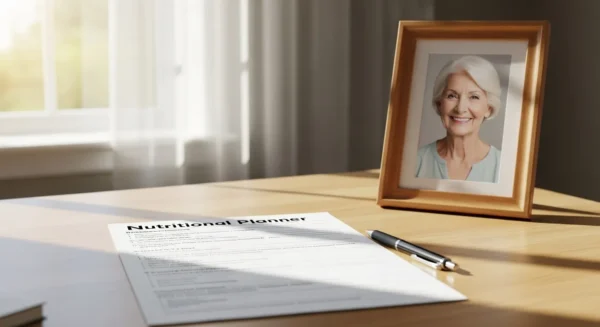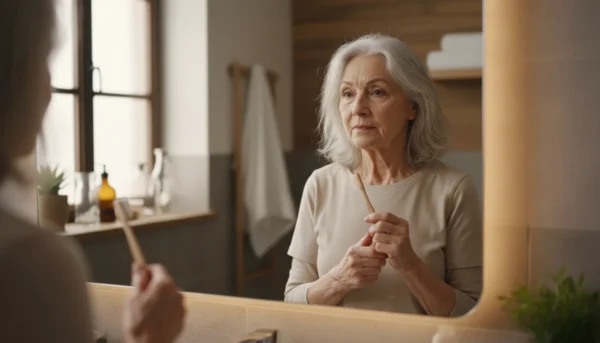
A Step-by-Step Guide to Meditating Safely
Getting started with meditation is simple. There is no need for special equipment or complicated rituals. The most important thing is to find a comfortable position and a quiet space where you won’t be disturbed for a few minutes. For seniors, safety and comfort are paramount, so we recommend practicing while seated in a sturdy chair.

1. Mindful Breathing: The Foundation of Calm
This is the most fundamental and accessible meditation practice. It can be done anywhere, anytime you need to ground yourself.
Step 1: Find Your Seat. Sit in a comfortable, supportive chair. Your feet should be flat on the floor, and your hands can rest gently on your lap. Sit upright but not stiffly—allow your shoulders to relax away from your ears.
Step 2: Set a Timer. Start with just three to five minutes. Using a timer helps you relax into the practice without worrying about how much time has passed.
Step 3: Settle In. You can either close your eyes gently or let your gaze soften and rest on a point on the floor a few feet in front of you. Take a few slow, deep breaths to begin.
Step 4: Focus on Your Breath. Simply bring your attention to the sensation of your breath. Notice the feeling of the air as it enters your nostrils, fills your lungs, and then leaves your body. You don’t need to change your breathing; just observe it as it is.
Step 5: Acknowledge Wandering Thoughts. Your mind will wander. This is completely normal and expected. When you notice your thoughts have drifted to your to-do list or a past conversation, gently and without judgment, guide your attention back to your breath. The act of returning your focus is the practice.
Step 6: End Gently. When your timer goes off, slowly bring your awareness back to the room. Wiggle your fingers and toes, and when you feel ready, slowly open your eyes.

2. Body Scan Meditation: Releasing Physical Tension
This is an excellent practice for deep relaxation and is especially helpful for those who hold tension in their bodies or have trouble sleeping. It can be done seated in a chair or lying down in a comfortable and safe position.
Step 1: Get Comfortable. Find a comfortable position in a supportive chair, recliner, or lying on your back in bed. If lying down, place a pillow under your knees to support your lower back.
Step 2: Begin with Your Breath. Take a few deep breaths to settle your body and mind. Feel the weight of your body being supported by the chair or bed.
Step 3: Bring Attention to Your Toes. Turn your focus to your feet. Notice any sensations in your toes—warmth, coolness, tingling, or perhaps nothing at all. Simply be aware of them without judgment. Imagine your breath flowing down to your toes, and as you exhale, feel any tension melting away.
Step 4: Slowly Move Up the Body. Gradually move your attention up through your body: to your ankles, calves, knees, and thighs. Spend a few moments on each part, just noticing the sensations. Continue up through your torso, your back, your arms, and your hands. Then move to your neck, your jaw, your eyes, and finally, the very top of your head.
Step 5: Rest in Awareness. After you have scanned your entire body, rest for a minute or two, feeling your whole body breathing. Notice the sense of wholeness and relaxation.

3. Loving-Kindness Meditation: Cultivating a Caring Heart
This practice focuses on developing feelings of goodwill, kindness, and warmth towards yourself and others. It can be a wonderful antidote to feelings of loneliness or frustration.
Step 1: Settle In. Find your comfortable seated position and take a few breaths to center yourself.
Step 2: Start with Yourself. Silently repeat a few phrases of well-wishing directed toward yourself. A common set of phrases is:
“May I be happy.”
“May I be healthy and strong.”
“May I be safe from harm.”
“May I live with ease.”
Repeat these phrases slowly, allowing the feeling behind the words to grow.
Step 3: Extend to a Loved One. Now, bring to mind a person you care about deeply. Picture them clearly and send the same well-wishes to them: “May you be happy. May you be healthy and strong…”
Step 4: Expand the Circle. You can gradually expand this circle of kindness to include friends, neighbors, neutral people (like a grocery store clerk), and eventually, even those with whom you have difficulty. The goal is to cultivate a universal feeling of compassion.


















